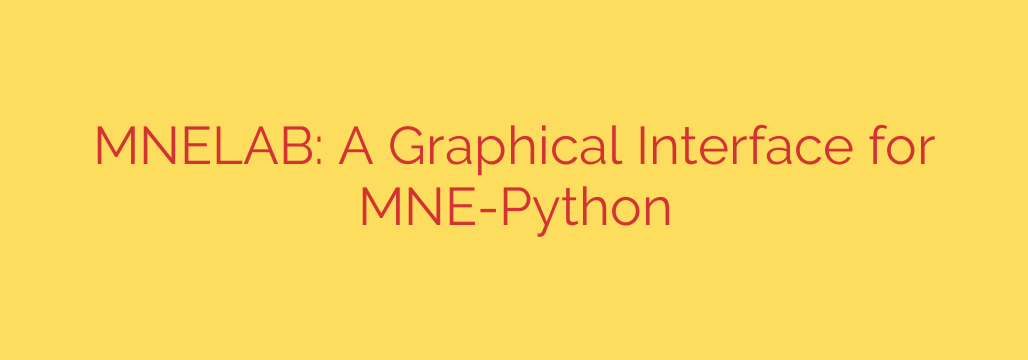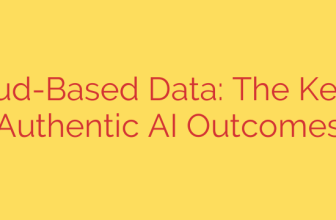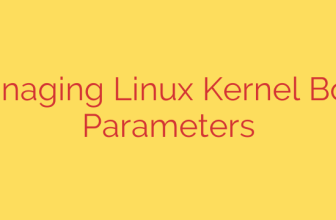
Streamline Your EEG and MEG Analysis with MNELAB: A Powerful GUI for MNE-Python
Analyzing electroencephalography (EEG) and magnetoencephalography (MEG) data is a complex but essential task for researchers and clinicians in neuroscience. The MNE-Python library has emerged as the gold standard for this work, offering unparalleled power and flexibility. However, its reliance on programming can create a steep learning curve, especially for those without a strong coding background.
What if you could harness the full power of MNE-Python through an intuitive, user-friendly graphical interface? Now you can. Meet MNELAB, a robust graphical user interface (GUI) designed to make advanced neurophysiological data analysis accessible to everyone.
What is MNELAB?
MNELAB is a free, open-source, and cross-platform application that provides a complete graphical workflow for M/EEG data analysis using the MNE-Python library. It effectively lowers the barrier to entry, allowing students, researchers, and clinicians to perform sophisticated analyses without writing a single line of code. From raw data import to final statistical analysis, MNELAB provides a seamless and visually-driven experience.
Key Features: A Complete Neurophysiological Workflow
MNELAB is not just a simple data viewer; it is a comprehensive analysis suite that covers the entire pipeline required for robust scientific inquiry.
1. Seamless Data Import and Handling
Getting your data into the analysis environment is the first critical step. MNELAB excels here by offering broad compatibility. It natively supports a vast array of common data formats, including European Data Format (.edf), Brainvision Core Data Format (.vhdr), and Elekta Neuromag data (.fif), among many others. This flexibility ensures you can start your analysis quickly, regardless of the acquisition system used.
2. Powerful Preprocessing Tools
Raw M/EEG data is noisy and requires careful cleaning before meaningful insights can be extracted. MNELAB provides an intuitive interface for all essential preprocessing steps:
- Filtering: Easily apply high-pass, low-pass, band-pass, and notch filters to remove noise and isolate signals of interest.
- Referencing: Effortlessly re-reference your data to any channel or an average reference, a crucial step for accurate interpretation.
- Channel Management: Interactively view, edit, and mark bad channels for exclusion from your analysis.
3. Interactive Data Visualization
A core advantage of a GUI is the ability to see your data. MNELAB offers rich, interactive plotting capabilities that allow you to visually inspect your data at every stage. You can plot raw continuous data, review power spectral density (PSD) to check for line noise, and visualize sensor locations in 2D and 3D. This immediate visual feedback is invaluable for quality control and developing a deeper understanding of your dataset.
4. Advanced Artifact Rejection with ICA
Artifacts from eye blinks, muscle movements, or heartbeats can contaminate M/EEG recordings. MNELAB integrates a powerful tool to address this: Independent Component Analysis (ICA). Through a simple graphical workflow, you can decompose your signal into independent components, visually identify artifactual sources, and surgically remove them from your data, leading to a much cleaner signal.
5. From Epoching to ERPs and Beyond
Once your data is clean, you can move on to event-related analysis. MNELAB simplifies the process of creating epochs (short segments of data time-locked to an event). From these epochs, you can compute and visualize event-related potentials (ERPs) or event-related fields (ERFs) to study the brain’s response to specific stimuli. The software also includes tools for time-frequency analysis, allowing you to explore how neural oscillations change over time.
Bridging the Gap: From Clicks to Code
One of MNELAB’s most transformative features is its focus on reproducibility and learning. As you perform actions in the graphical interface—like applying a filter or running an ICA—the software keeps a detailed history.
More importantly, MNELAB can automatically generate a clean, executable Python script that replicates your entire analysis session. This is a game-changer for several reasons:
- Reproducibility: You have a perfect, shareable record of your exact analysis pipeline, which is essential for modern open science.
- Learning Tool: By studying the generated script, users new to programming can learn how their graphical actions translate into MNE-Python code, effectively bridging the gap between GUI-based work and scripting.
- Batch Processing: The generated script can be easily adapted to run the same analysis on hundreds of other datasets, automating your workflow.
A Compelling Open-Source Alternative
In a field with established commercial software, MNELAB stands out as a powerful, cost-free alternative to proprietary packages. Built entirely on the open-source Python ecosystem, it offers a robust solution without expensive license fees. This makes it an ideal tool for teaching institutions, underfunded labs, and any researcher committed to using transparent, open-science tools.
By providing a user-friendly interface for the powerful MNE-Python engine, MNELAB democratizes access to state-of-the-art neurophysiological analysis, empowering a new generation of scientists to unlock the secrets of the human brain.
Source: https://www.linuxlinks.com/mnelab-gui-mne-python/








